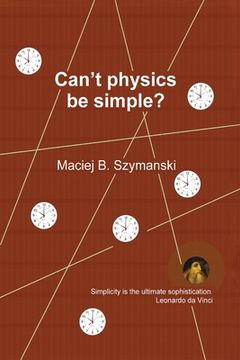Reseña del libro "Can't physics be simple?"
This book is about the fundamental physics (nature).Between the lines, it is argued that the progress in physics has been limited by the current paradigm of physics. It appears that that paradigm has been strongly influenced by religion. In this regard, the authors of the bible wrote: "And God said, let us make man in our image..." (Genesis, 1:26). It seems that those authors got it upside down. It was actually them who made God in man's image, and not the other way around. That is a paraphrase of the most significant hypothesis put forward in this book. Other hypotheses include the only possible resolutions of the following two paradoxes.The second hypothesis is the resolution of the Newton's paradox, which implies that the range of gravitational interaction is infinite while the mass-energy of a material object that causes that interaction is finite. Herein, it is suggested that the range of gravitational interaction of an object is finite and proportional to its mass-energy content.The other hypothesis is the resolution of the abstract (immaterial) force/energy paradox, which implies that an immaterial (abstract) physical entity can affect a material entity. The Newton's version of this paradox is the fictitious (immaterial) force of inertia, which exists only in the physicist's mind while it affects a driver in an accelerating car. The driver comprises matter (electrons, protons, neutrons). The Einstein's version of this paradox is the abstract (immaterial) spacetime, which exists only in the physicist's mind while it affected the LIGO arms. The arms comprised matter (electrons, protons, neutrons). In this book, it is suggested that it is the motion of a material energy (matter) and an energy nonequilibrium condition that underly those two effects.The above hypotheses lead to simple explanations of many of the most resilient mysteries in physics. Those concern the distinction between the physical and human space and time, the absolute frame of reference, the action-at-a-distance mode of interaction, the weakness of the force of gravity, the direction of the force of gravity, the equivalence principle, the fictitiousness of the force of inertia, the speed of interaction, the kinetic energy potential energy conversion, the substance of gravitational waves, the absolute zero temperature, the substance of heat, the nucleus-electron interaction, the sun-planet interaction, the gravitational-time dilation, the stellar coronae, the constancy of the speed of light, the aberration of light, the cosmological redshifts, the quantum entanglement, and the double-slit experiment.

